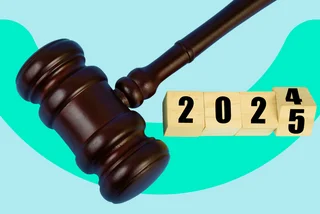Looking for a job in Prague?
Click here to find thousands of positions for English and multi-lingual speakers.
Send me your CV. Nice words to hear if you are job searching, but, especially if you are from America, what exactly are they looking for? How is a CV (curriculum vitae) different from a resume and how do you write one?
Short and simple is the resume´s mantra, while the CV wants to know a little more about you. The main differences between the two are in length, what is included and what each is used for. In the US, a CV is used, but mainly only for academic or research positions. In Europe, the Middle East and Asia, employers will expect to see a CV. A CV will typically run two or more pages; while the resume´s goal is to give the reader a brief sample of your education, skills and professional experience.
Your CV should include all the basic details like on a resume (your name, contact information, etc.) as well as information on your education, any academic experience or publishing credits, awards, honors and professional organizations you belong to. You´ll also want to give a more detailed summary when listing your professional qualifications and job history. Here are some sample groupings:
· Contact information
· Personal information (in the Czech Republic, it is common to include your birth date, citizenship, visa status and gender)
· Employment history (include work history, academic positions and any research or training)
· Education (include dates, majors, degrees and certifications)
· Professional Qualifications (include certifications, accreditations and computer and language skills)
· Publications/Presentations
· Awards and Honors
· Professional memberships
· Interests (you can include personal interests such as hobbies, sports, etc.)
When starting to write your CV, think about the end user (i.e. your potential new boss.) You may want to have a couple different documents in order to highlight your separate skills for a variety of positions. Writing your contact information and educational background is fairly straightforward, but don´t forget to include other information and things you have done in order to make a well-rounded impression.
The nice thing about a CV is you have the possibility to include more details than in a simple resume. However, that doesn´t mean you should include organizing the neighborhood tea parties as a child as an example of your leadership skills. You need to choose carefully the information you´d like to share and make sure it is relevant to the position. When discussing your current and past job positions, a short detailed summary written in a simple, clear and formal style is best.
There are a couple of ways you can choose to format your employment history. One is by listing your position, the name of the company, plus your job duties in a bulleted format:
Human Resources Director, ABC Computers, August 2005-Present
· Coordinated hiring of 350 employees
· Managed employee health care system
· Designed employee handbook
This can also be written in paragraph form:
Human Resources Director, ABC Computers, August 2005-Present
Responsible for the hiring and overseeing of 350 employees. Managed the employee healthcare system and designed the company´s first employee handbook.
Always write your employment history chronologically and include position title, details and dates of employment.
There are a couple different styles of CV that may help you focus on designing yours. The functional CV covers your career history, skills abilities and expertise. This is a good CV if you are looking to change careers and want to highlight transferable skills. A chronological CV (most common) also details your career history (in chronological order) as well as your educational background. You would choose this CV if you are staying in the same field and want to show career progression.
When formatting your CV, you need to design something that is simple to read and consistent. Make sure there is plenty of white space; and you have used any bolding, italics, paragraphing, etc. consistently. And be honest. It is always tempting to make our CV´s impressive, but embellishing the truth, or straight-out lying will only come back to haunt you. Be sure to have someone else read it over. They´ll be able to catch any typos, and may have suggestions for how to make it clearer or easier to read.
There are tons of sample CV´s online as well as more information on how to write one and when to send one. Career Lab (www.careerlab.com) is one source, as is Great CV´s (www.greatcvs.co.uk) and the Career Resource Center (www.career-resource.net.) Monster (www.monster.co.uk) has CV templates as well.












 Reading time: 3 minutes
Reading time: 3 minutes 


















